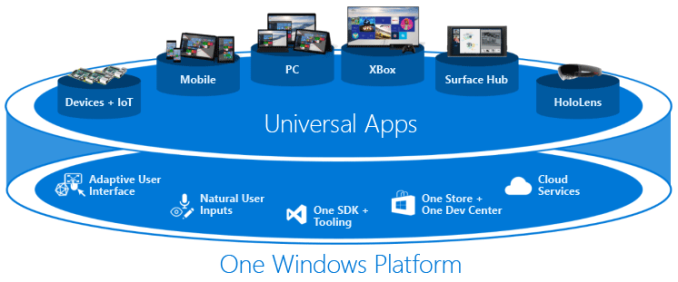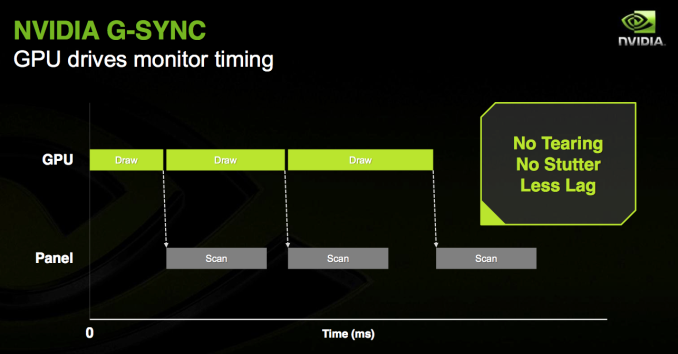
Original Link: https://www.anandtech.com/show/10312/microsoft-adds-vsync-control-and-adaptive-framerate-support-to-the-universal-windows-platform
Microsoft Adds V-Sync Control And Adaptive Framerate Support To The Universal Windows Platform
by Brett Howse on May 10, 2016 6:05 PM EST- Posted in
- Operating Systems
- Microsoft
- Windows 10
- DirectX 12

Microsoft has certainly gone all-in on their Universal Windows Platform (UWP) and have been updating it, including the name, for several years now. What originally started as WinRT apps has morphed into a much more powerful platform which can support a wide variety of apps. There’s no doubt that traditional Win32 apps made for the desktop are not going away, but with Project Centennial, Microsoft hopes to bring at least actively developed Win32 apps over to the UWP platform.
One of the main areas that Microsoft has focused on in their marketing is UWP’s support for DirectX 12 in Windows 10, and to that end they have promoted several big budget games which have come to the Windows Store as a UWP app. But the move from tablet style games to high demand PC games was not entirely smooth. The UWP platform operates in a different way than traditional Win32 games, and it lacked several features that PC gamers had become accustomed to. Some of those features were as simple as the ability to control V-Sync in a game, and exclusive fullscreen.
In today’s patch Tuesday, Microsoft has addressed some of these complaints, and the timing of the updates are important as I will get to in a bit. First, UWP now support controllable V-Sync, as well as support for adaptive framerate displays in AMD’s FreeSync or NVIDIA’s G-SYNC. That is very important if they really want to reach for the PC gamer, since these technologies come at a price premium, and there’s no point buying a game in the Windows Store if this will not work, especially when it will work if the game is available on Steam.
The games themselves will need to be updated to support this, but since most of the games that have been released so far are either published by Microsoft, or worked on closely with Microsoft, this should happen soon.
One known caveat at this time is that people with laptops which have an integrated GPU plus a discrete GPU will not yet have the option to disable V-Sync, and Microsoft states they are working on having this available “as quickly as possible” so if you have a laptop using Optimus or Dynamic Switchable Graphics, some more waiting will be needed.
Microsoft also addressed another point in today’s news announcement. Exclusive Fullscreen is another PC quirk where a game is given unrestricted access to the display, and this was done for greater performance many years ago. UWP apps cannot access this mode though, and instead run in a borderless window. There are advantages to this method, since you can more easily multitask, but there are concerns about performance. Traditionally, you’d be at the mercy of the Desktop Window Manager to do the game rendering in a window, which is likely why V-Sync was likely an issue with UWP apps until today. Microsoft is addressing the performance though by stating that any DirectX 12 game will have identical performance in borderless windowed mode or exclusive fullscreen. Since most new games coming to the store will likely support DirectX 12, this shouldn’t be an issue then.
These changes are important for a couple of reasons. First is the timing, which I alluded to earlier. The next big update for Windows 10 is codenamed Redstone, and is due to land in the July timeframe, or about a year after Windows 10 was launched. By pushing out these changes prior to that update, it sends a message that they are not planning on being bound by major releases of Windows 10 in order to fix gaming issues. Microsoft wants Windows 10 to be a good gaming platform, so this is very important.
Even with these changes though, there are still some other issues with UWP which will need to be addressed. Since the games launch in a sandbox, tools that PC gamers are used to using such as FRAPS will no longer work, and because there is no EXE file launched, per application settings in something like the NVIDIA control panel. Mouse settings, which detect the .exe and change the button mapping, as well as macros which do the same, also will not work. The Windows Store is also missing the ability to backup games, so if you ever have to reinstall a game again, you have to download the entire game from the store, rather than restoring from a backup. Since the games we are discussing can easily be 50 or more Gigabytes, this should be an option like it is on Steam.
The timing of these updates though, which are not tied to a major Windows 10 update, are encouraging, and hopefully display that Microsoft is committed to the UWP platform for PC gaming and will update it to address issues. It’s an important step, but with major competition in this market from Steam and Origin, they won’t be able to rest on their laurels.









